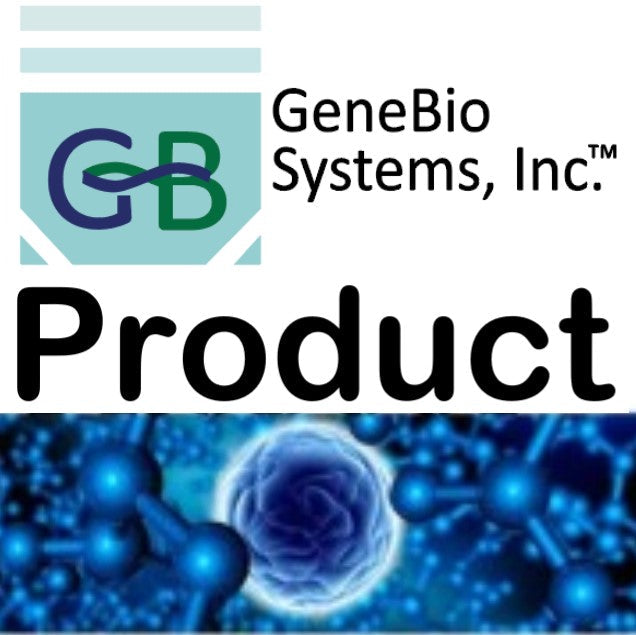Gene Bio Systems
Recombinant Human Hyaluronidase PH-20(SPAM1)
Recombinant Human Hyaluronidase PH-20(SPAM1)
SKU:CSB-EP022471HU-GB
Couldn't load pickup availability
>Several Other Sizes Are Also Available. Please Inquire. Default Size: 200ug
Updated Date: Stock Protein updated on 20170725
Research areas: Cancer
Target / Protein: SPAM1
Biologically active: Not Tested
Expression system: E.coli
Species of origin: Homo sapiens (Human)
Delivery time: 3-7 business days
Uniprot ID: P38567
AA Sequence: LNFRAPPVIPNVPFLWAWNAPSEFCLGKFDEPLDMSLFSFIGSPRINATGQGVTIFYVDRLGYYPYIDSITGVTVNGGIPQKISLQDHLDKAKKDITFYMPVDNLGMAVIDWEEWRPTWARNWKPKDVYKNRSIELVQQQNVQLSLTEATEKAKQEFEKAGKDFLVETIKLGKLLRPNHLWGYYLFPDCYNHHYKKPGYNGSCFNVEIKRNDDLSWLWNESTALYPSIYLNTQQSPVAATLYVRNRVREAIRVSKIPDAKSPLPVFAYTRIVFTDQVLKFLSQDELVYTFGETVALGASGIVIWGTLSIMRSMKSCLLLDNYMETILNPYIINVTLAAKMCSQVLCQEQGVCIRKNWNSSDYLHLNPDNFAIQLEKGGKFTVRGKPTLEDLEQFSEKFYCSCYSTLSCKEKADVKDTDAVDVCIADGVCIDAFLKPPMETEEPQIFYNASPSTLS
Tag info: N-terminal 6xHis-SUMO-tagged
Expression Region: 36-490aa
Protein length: Full Length
MW: 67.9 kDa
Alternative Name(s): Hyaluronoglucosaminidase PH-20Sperm adhesion molecule 1Sperm surface protein PH-20
Relevance: Involved in sperm-egg adhesion. Upon fertilization sperm must first penetrate a layer of cumulus cells that surrounds the egg before reaching the zona pellucida. The cumulus cells are bedded in a matrix containing hyaluronic acid which is formed prior to ovulation. This protein aids in penetrating the layer of cumulus cells by digesting hyaluronic acid.
Reference: Exome sequencing identifies frequent mutation of the SWI/SNF complex gene PBRM1 in renal carcinoma.Varela I., Tarpey P., Raine K., Huang D., Ong C.K., Stephens P., Davies H., Jones D., Lin M.L., Teague J., Bignell G., Butler A., Cho J., Dalgliesh G.L., Galappaththige D., Greenman C., Hardy C., Jia M. , Latimer C., Lau K.W., Marshall J., McLaren S., Menzies A., Mudie L., Stebbings L., Largaespada D.A., Wessels L.F.A., Richard S., Kahnoski R.J., Anema J., Tuveson D.A., Perez-Mancera P.A., Mustonen V., Fischer A., Adams D.J., Rust A., Chan-On W., Subimerb C., Dykema K., Furge K., Campbell P.J., Teh B.T., Stratton M.R., Futreal P.A.Nature 469:539-542(2011)
Purity: Greater than 90% as determined by SDS-PAGE.
Storage: The shelf life is related to many factors, storage state, buffer ingredients, storage temperature and the stability of the protein itself. Generally, the shelf life of liquid form is 6 months at -20℃/-80℃. The shelf life of lyophilized form is 12 months at -20℃/-80℃.
Notes: Repeated freezing and thawing is not recommended. Store working aliquots at 4℃ for up to one week.


